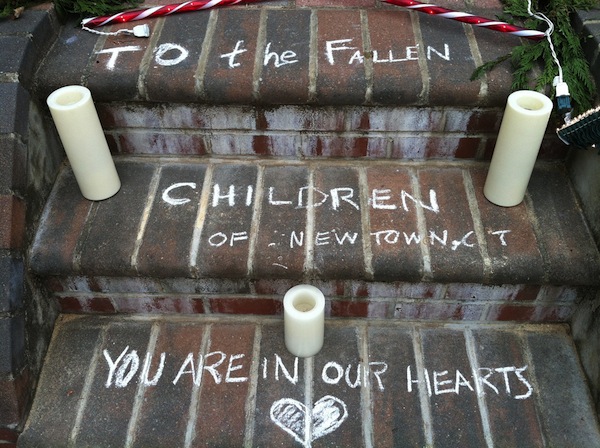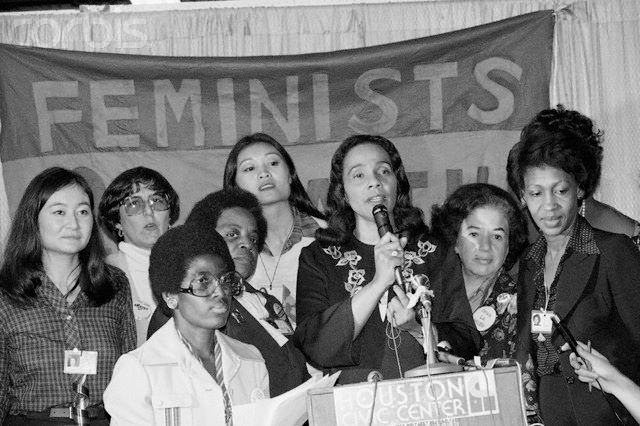Is a picture worth a 1000 words? Race and the politics of mourning

Hank Willis Thomas
A couple weeks back, Melissa Harris Perry and her guests discussed the power of images, focusing on the debate as to whether or not the public should see images of Newtown violence. While recognizing the pain and difficulty for the Newtown parents, each seemed to conclude the stakes were too high and that the public needed to see the images.
Michael Skolnick called upon Connecticut Gov. Dannel Malloy to release the pictures. The past reveals that the sight of images has the potential to change the course of history. Amid the gun debate, the sight of young (middle-class white) children brutalized may galvanize change. Skolnick, who later noted, “Newtown changed the conversation because they were white,” highlights the power of the photographs of whiteness.
I think that for Americans, we have to see these images. This is not about politics. This is about lifting the consciousness of our nation. We have to know, yes, these were angels that went to heaven, but this was a brutal, brutal attack on children whose hands were blown off, whose faces were blown off and torsos were blown off. This is not just about glamorizing or sensationalizing what happed in Newtown. This was horror.
Yet, so much of the conversation was about the universal power of seeing evil; that viewing the horrors of gun violence, brutality, or abuse compels outrage and action. In fact, Melissa Harris-Perry started the show by highlighting the power of images to sway public opinion; pictures shape the debate, elicit emotion, and inspire action:
So it’s a tough choice. And when it comes to choosing to show the image, the slain child, it’s a decision no parent should be faced with having to make. But it is a decision that Mamie Till-Mobley did make in the case when her son Emmett Till was killed in 1955. Instead of having a reserved, low-key, private family funeral, Mamie decided to open the casket. To make the funeral a public experience. To show how killers, lynchers, J.W. Milam and Roy Bryant brutalized and tortured her 14-year-old son to death. Her decision to show the world the battered body and unrecognizable face of her son Emmett served as a spark for the civil rights movement. Till’s example might lead all of us to ask Newtown parents to release those pictures. Be as brave as Mamie Till was.
To illustrate the power of image, Harris Perry and others noted how the sight of Emmett Till, beaten beyond recognition, compelled national attention and outrage, spurring the civil rights movement. In reality, it galvanized and inspired action, among African Americans. However, the sight of Till’s disfigured body didn’t produce systemic change; it didn’t lead to legislation from congress nor did it compel federal intervention. It didn’t lead to white America to look in the mirror or confront racism because it had seen its brutality. Even the acquittal of two men didn’t propel a national movement across communities demanding justice and change. Till’s death and his life, his humanity, wasn’t, to borrow from Mark Anthony Neal, “legible.” Black suffering was and continues to be “illegible” to much of white America.
Instead, Till’s death and the horrifying images impacted Black America. Much of white America continued to accept Southern apartheid. All images are not created equally; the white supremacist gaze clouded the moral, political, and cultural responses. 
It is no wonder that as we look at the Till generation, as we look into the historic archives to bear witness to the impact of the lynching of Till had, we see examples of how the lynching of Till galvanized activism from within the black community. Muhammad Ali and Diane Nash, Langston Hughes and Gwendolyn Brooks, Audre Lorde and James Baldwin, Anne Moody and members Black Panther Party all spoke of the transformative impact of Till. Harvey Young describes the importance in “A New Fear Known to Me”:Emmett Till’s Influence and the Black Panther Party”
While spectacular murders of black people, both male and female, by white individuals and mobs had occurred for centuries within (and across) the United States, the Till case proved extraordinary thanks to Bradley’s concerted efforts not only to openly display her son’s bloated and misshapen corpse but also her maternal grief for the world to see. Although not recognizable as a person – much less a teenager, the face of Till, captured by a photographer and circulated via print media, promptly became a representation of the severity of racial hatred, prejudice, and violence that continued to exist in the nation. … It asserts that the killing not only encouraged a newfound self-awareness among black youth as “black” and, therefore, as being susceptible to violence, but also provided additional motivation toward the formation of political organizations like the Black Panther Party, which advocated a more aggressive pursuit of social reform than the NAACP and the Southern Christian Leadership Conference (SCLC). Till’s influence on “the Party” appears not only in the recollections of members, who were nearly the same age as Till when he was murdered, but also in the Party’s skillful use of images of injustice to raise civic awareness and mobilize a new movement for social reform, efforts to monitor the police, and establishment of community-based, social service programs which sought to create a hopeful future for new generations of black youth.
Death and its meanings is clouded and constrained by race, class, and nation; bloodshed and violence is narrated through America’s white racial frame.

The differential levels of mourning and outrage afforded to different bodies are visible throughout history. In fact, the civil rights movement used white supremacy and codified white privilege as part of its struggle to bring down the walls of Jim Crow segregation. The Freedom Rides and Freedom Summer relied on violence against white civil rights workers to compel national attention, governmental intervention, and widespread outrage. One organizer noted that, “the death of a white college student would bring on more attention to what was going on than a black college student getting it.” In other words, the reports of the beating, bombing, brutalization, or murder of African Americans didn’t elicit sufficient outrage and action; images of maimed black men and women, and those who lost their lives to white supremacist hands, did not compel mourning or calls to action. The sight of maimed white bodies, of whiteness, marked as innocence, as civility, as citizen, and as the future, provoked a differential emotional, political, and media reaction than did violence directed at black bodies. Writing about a SNCC Poster entitled “For Food . . . For Freedom,” which featured a blond haired white child, Leigh Raiford reflects on the powerful ways that SNCC used the accepted humanity of white bodies in their fight for justice:
The “for food . . . for freedom” poster also suggests SNCC’s increased awareness of the value assigned white bodies over black bodies in the estimation of U.S. liberals, a cognizance that prompted the recruitment of more than eight hundred predominantly white, predominantly northern college students for the massive voter registration efforts of Freedom Summer. James Forman and Bob Moses rightly anticipated the media attention and general sympathy that would come to bear as young white men and women experienced, if only for a few months of 1964, the same vulnerability that beleaguered African Americans in the face of white supremacist violence. The poster speaks to the precarious situation of whites dehumanized by the matrices of race and poverty.
Pictures exist in a social context; the sight of violence and death is always read through socially-produced scripts and gaze. Gun violence is profiled racially. Victims are profiled racially. Perpetrators of violence are profiled racially; communities are profiled racially. The visibility and invisibility of death perpetuates this profiling schema; it reflects the logics of racial profiling as well.
The notion that visibility of violence or death compels national outrage erases the real world context of Trayvon Martin, who has been turned into the perpetrator rather than the victim within some parts of white America (see Fox news). Look at Jordan Davis, Hadiya Pendleton, Chicago and New Orleans. What about Oscar Grant, and so many others who have died at the hands of “law enforcement” #every28hours?
When talking about photographs, we must recognize that every life is not treated equally; every person’s humanity is not seen so much so that every image will elicit action and change. As Rebecca Wanzo argues in The Suffering Will Not Be Televised: African American Women and Sentimental Political Storytelling, shaming or “sentimentality” is an “insufficient means of political change.” Substantive change, especially when we are talking about the suffering and bodies that aren’t “legible” to white America, requires more than exposure. A photograph that potentially forces white American into a moral crossroad does not guarantee reaction and action toward transformation. Consciousness isn’t a natural outcome of knowledge; it’s not all about the photo. Change results from organizing and agitation. That is the true lesson from history.




Pingback: Is a picture worth a 1000 words? Race and the politics of mourning | OCG
Pingback: Is a picture worth a 1000 words? Race and the politics of mourning | OCG
Pingback: Is a picture worth a 1000 words? Race and the politics of mourning | OCG
Pingback: Is a picture worth a 1000 words? Race and the politics of mourning | OCG
Pingback: Is a picture worth a 1000 words? Race and the politics of mourning | Dr. David J Leonard
Pingback: Is a picture worth a 1000 words? Race and the politics of mourning | Dr. David J Leonard
Pingback: Is a picture worth a 1000 words? Race and the politics of mourning | Dr. David J Leonard
Pingback: Is a picture worth a 1000 words? Race and the politics of mourning | Dr. David J Leonard